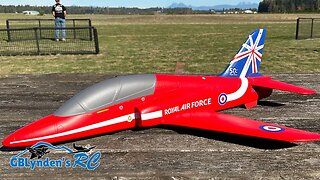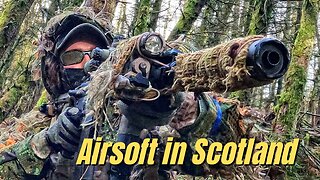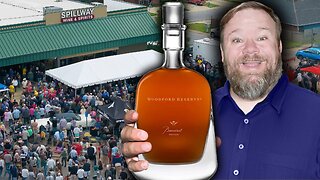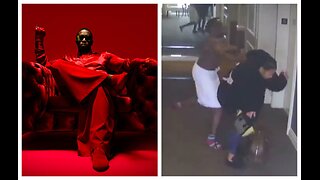Parkzone F4U-1A Corsair Rough Field Landing Gear Review and Maiden with Take-offs and Landings
This video features the Parkzone F4U-1A Corsair rough field landing gear in a review and maiden flight with the new landing gear on this WWII Warbird RC Plane. The video review contains an unboxing or unpackaging, installation, maiden, and review to show what one should expect if they purchase this rough field landing gear for their PNP (Plug-N-Play) or BNF RC model.
The links in this description are affiliate links. They give me a small commission on sales which helps support the channel and keep it independent: https://www.amazon.com/shop/gblyndensrc
This RC Plane Park Flyer is brought to us by RC juggernaut Horizon Hobby. This is also a favorite of many WWII Warbird fans and may be one of the better PZ Parkflyer options they have ever released under their Parkzone brand, though it is debatable if this plane is in fact an upgrade over the previous version for fancy flaps and retracts.
My review notes focus on the Rough Field Gear Set: F4U-1A for the Parkzone F4U-1A or the F4U-1A Corsair Parkzone, which is the newest Parkzone F4U Corsair:
Cons:
- Not very scale
- A bit bouncier than the stock landing gear on landings
Pros:
- Easy to install
- Inexpensive
- Have made nose overs next to impossible
- Makes it possible to taxi on rough damp grass
Note: These are NOT for the Hobbyzone Corsair S with SAFE or at least I cannot verify that they will work with that plane.
Takeaway: This is a very nice RC plane in the Parkzone Corsair with the rough field landing gear and it makes it far more flexible of a flying option than my T-28 Trojan! This plane was flown 100% stock with the exception of flying with a Gforce 2200mAh lipo battery.
Remote Control Planes like this are one of the main reasons why I have become so addicted the hobby. The advent of the BNF (Bind and Fly) and PNP (Plug and Play) makes it easy to become addicted to Horizon Hobby brand products such as Parkzone, E-flight, and Blade. I can fly all of their planes and Heli's with my trusty DX6i 6-channel transmitter radio.
Here is some history on this plane via Wikipedia:
Operational History
The performance of the Vought F4U Corsair was impressive. The F4U-1 was considerably faster than the Grumman F6F Hellcat and only 13 mph (21 km/h) slower than the Republic P-47 Thunderbolt;[28][29][30] all three were powered by the R-2800. But while the P-47 achieved its highest speed at 30,020 feet (9,150 m) with the help of an intercooled turbocharger,[31] the F4U-1 reached its maximum speed at 19,900 ft (6,100 m),[32] and used a mechanically supercharged engine.[33]
The U.S. Navy received its first production F4U-1 on 31 July 1942, but getting it into service proved difficult. The framed "birdcage" style canopy provided inadequate visibility for deck taxiing. Even more seriously, the machine had a nasty tendency to "bounce" on touchdown, which could cause it to miss the arresting hook and slam into the crash barrier, or even go out of control. The long "hose nose" visibility problem and the enormous torque of the Double Wasp engine also created operational problems.
Carrier qualification trials on the escort carrier USS Sangamon, on 25 September 1942, caused the U.S. Navy to release the type to the United States Marine Corps.[34] Early Navy pilots spoke disparagingly of the F4U as the "hog", "hosenose" or "bent-wing widow maker".[35] After all, the U.S. Navy still had the Grumman F6F Hellcat, which did not have the performance of the F4U but was a far better deck landing aircraft. The Marines needed a better fighter than the F4F Wildcat. The type was declared "ready for combat" at the end of 1942, though only qualified to operate from land bases until carrier qualification issues were worked out.[36]
The US Navy did not get into combat with the type until September 1943, and the Royal Navy's FAA would qualify the type for carrier operations first. The U.S. Navy finally accepted the F4U for shipboard operations in April 1944, after the longer oleo strut was fitted, which finally eliminated the tendency to bounce.[40]
The first recorded combat engagement was on 14 February 1943, when Corsairs of VMF-124 under Major Gise assisted P-40s and P-38s in escorting a formation of Consolidated B-24 Liberators on a raid against a Japanese aerodrome at Kahili. Japanese fighters contested the raid and the Americans got the worst of it, with four P-38s, two P-40s, two Corsairs and two Liberators lost. No more than four Japanese Zeros were destroyed. A Corsair was responsible for one of the kills, although this was due to a midair collision. The fiasco was referred to as the "Saint Valentine's Day Massacre".[42][43]
I am also happy to report that I did not crash even on the rougher landing.
-
 3:28
3:28
GBLynden's RC
7 months ago4S Maiden | Arrows RC BAe Hawk 50mm EDF Jet
121 -
 5:46
5:46
Chris Jericho
17 hours agoTalk Is Jericho Highlight: Renny Harlin Talks The Strangers & Nightmare On Elm Street 4
12.6K1 -
 17:05
17:05
DEADBUGsays
1 day agoThe Beast Of Manchester
6.69K4 -
 4:54
4:54
ErmzPlays
5 hours agoHalo Composer Sets Gaming Industry ON FIRE By Coming Out As Republican
10.4K4 -
 11:15
11:15
Good Kid Productions
1 day agoCalling Lab Leak Early with the Washington Post's Josh Rogin (convo)
10.6K2 -
 4:42
4:42
scoutthedoggie
7 hours agoWar Games in Scotland
11.9K2 -
 35:59
35:59
Brewzle
23 hours agoThis Is The BIGGEST Bourbon Drop I’ve Ever Seen
10.1K1 -
 8:03:59
8:03:59
SNEAKO
15 hours agoSNEAKO X SPECIAL GUEST
130K132 -
 6:56:33
6:56:33
Akademiks
18 hours agoDiddy Brutal Beatdown of Cassie Caught on Video Tape! Diddy Paid to Supress it, But it still LEAKED!
103K61 -
 LIVE
LIVE
Right Side Broadcasting Network
4 days agoLIVE REPLAY: President Trump Keynotes Minnesota GOP Annual Dinner - 5/17/24
4,822 watching